categories
All Categories
- Bitcoin
- Centralised Exchanges
- Crypto
- Crypto Asset Volatility
- Crypto Correlations
- Crypto Governance
- Crypto in the Portfolio
- Crypto Valuations
- DeFi
- ESG
- Ethereum
- Investment Highlight
- Regulation
- Security and Privacy
- Social Media Influence
- Stable Coins
- Traditional Finance and Crypto
- Uncategorized
- UNSDG
- Web 3.0
Authors
All Authors

Farcaster: The Decentralised Social Network
by Quinn Papworth
In the ever-evolving landscape of digital interaction and online communities, the emergence of decentralised social platforms is reshaping user connectivity, privacy, and ownership.
Among these pioneering platforms, Farcaster has risen to the top as a beacon of what a future Decentralised Social Network (DeSoc) may look like.
Decentralised Social Explained
At its core, DeSoc envisions a future where social interactions, transactions, and digital identities are not governed by central authorities but are instead distributed across a decentralised network of users. This paradigm shift aims to enhance privacy, security, and autonomy by leveraging blockchain technology and peer-to-peer networks. In DeSoc, individuals have complete control over their data, digital assets, and online presence, paving the way for a more equitable and user-centric internet where value can return to the edges of the network.
Farcaster Explained
Founded by former Coinbase Vice-President Dan Romero and Senior Director Varun Srinivasan in 2020, Farcaster is a ‘sufficiently decentralised’ social media platform that integrates web3 wallets and experiences with social media platforms in order to deliver increased ownership to users. Farcaster is also innovating with new novel social primitives such as ‘frames’.
The Farcaster network emphasizes user autonomy, data portability, and interoperability within the broader digital ecosystem. Unlike traditional social media platforms, Farcaster operates on a decentralised infrastructure, ensuring that users retain ownership of their content and social connections. This approach not only enhances privacy and security but also fosters a more open and resilient digital community.
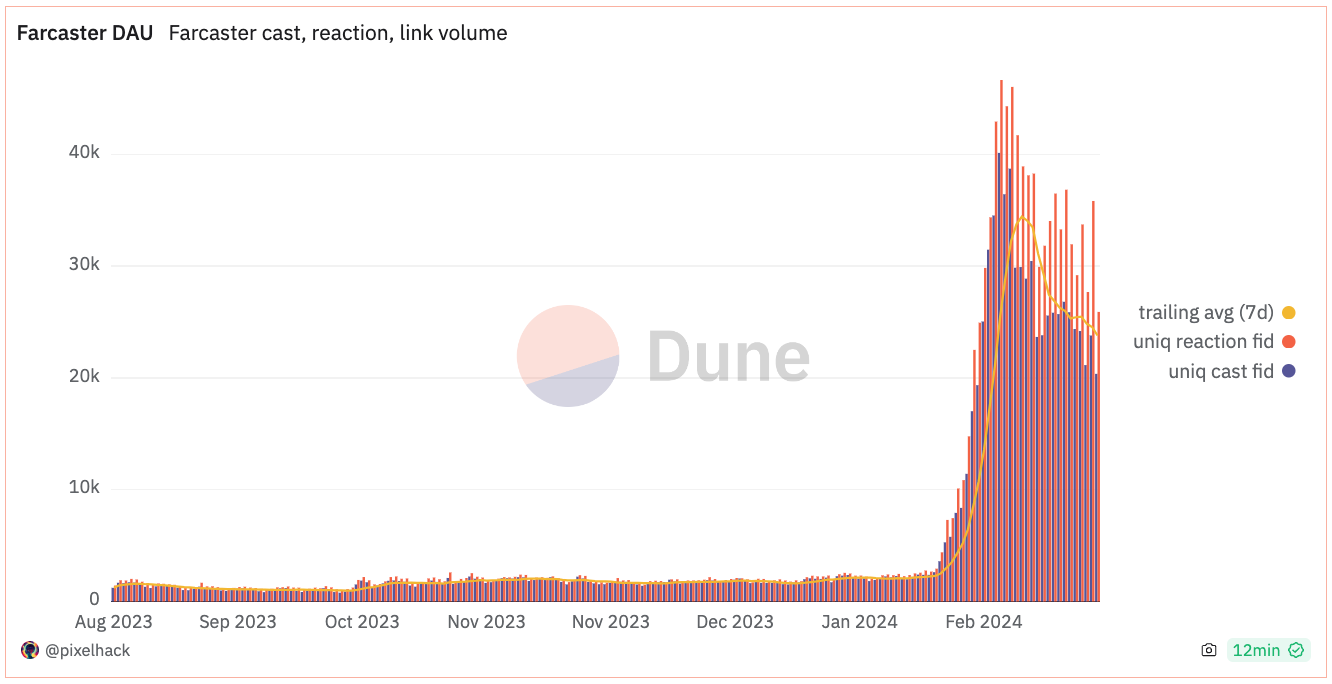
Farcaster Daily Active Users (DAU) – Source: Dune
Traction
To date, Farcaster has seen significant growth through its Twitter-like platform ‘Warpcast’ where crypto-native users have been drawn in as a result of the platform’s decentralised tenets, aligned with that of popular blockchains. The platform is seeing notable growth with over 27,000 new users per week and a total pool of over 300,000 users.
Farcaster’s traction is an indicator of the growing demand for alternatives to centralised social media platforms as users are drawn to the refreshing promise of a platform that respects their rights. Farcaster has also seen significant growth as a result of airdrop farmers looking to claim tokens and NFTs through involvement with the Farcaster network and more specifically through interaction with ‘Frames’. As such the Farcaster protocol is also seeing notable increases in its total revenue as it sells block space on its network.
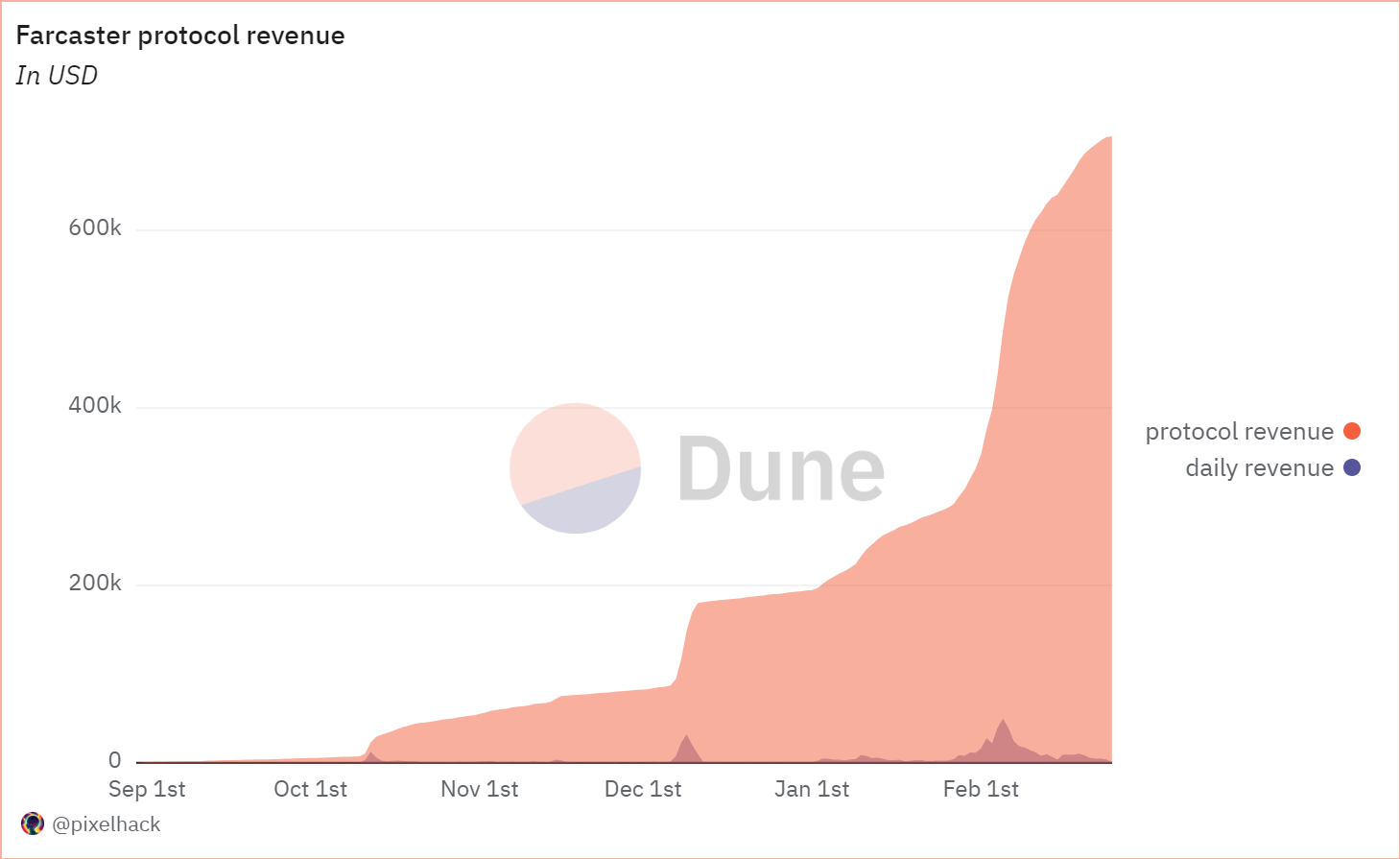
Farcaster Protocol Revenue – Source: Dune
Farcaster’s Architecture
Farcaster is built on top of Optimism, a popular layer 2 network built upon Ethereum. Farcaster is designed to be scalable through its hybrid architecture where identity is stored on chain and data is stored off chain. This allows Farcaster to maintain high throughput and low latency to support a seamless user experience. Interoperability is a key consideration of Farcaster, with protocols and standards in place to facilitate communication and data exchange with other decentralised systems and applications. One such example is Farcaster’s use of a decentralised name registry (DNS) that is integrated with the Ethereum Name Service (ENS).
Farcaster’s DNS allows users to take ownership over their audience and identity for the first time in recent social media history. This is meaningful as it allows Warpcast users to port over their existing identity and audience to whatever platform they want to use within the wider Farcaster ecosystem. Such architecture allows users to avoid being confined to just one network out of fear that they will lose their identity alongside their audience.
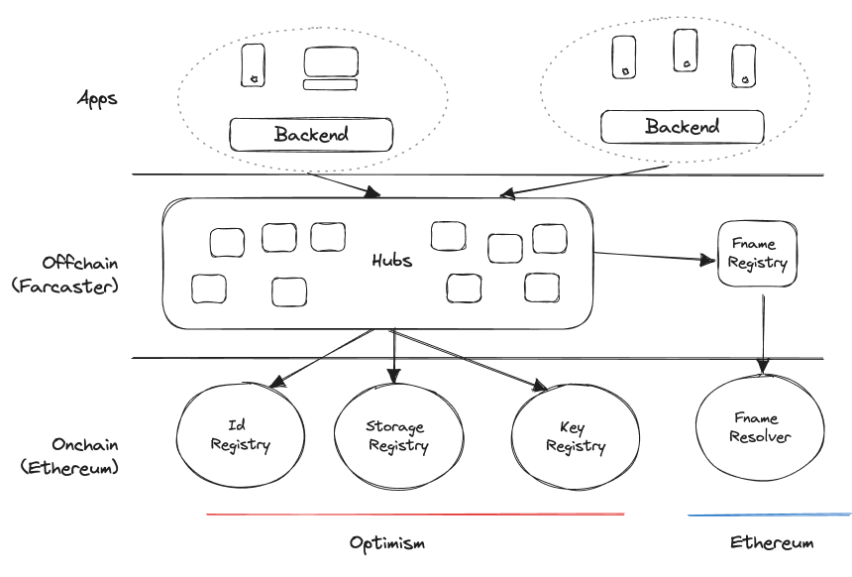
Source: Farcaster Docs
‘Frames’: An Innovative New Social Primitive
Frames are a fundamental component of Farcaster’s architecture, serving as the building blocks of its social feed. In essence, Frames allow users to turn any post into an interactive app allowing for various types of content and interactions within the network.
This allows users to interact with their feeds in a brand new way turning static website links into interactive experiences that exist within the feed. Due to the open-source nature of frames, the possibilities are somewhat endless. Some exciting use cases we have seen so far include: Being able to mint NFTs in-app via frames, games playable within frame, the ability to place bets through frames, e-commerce stores within frames.
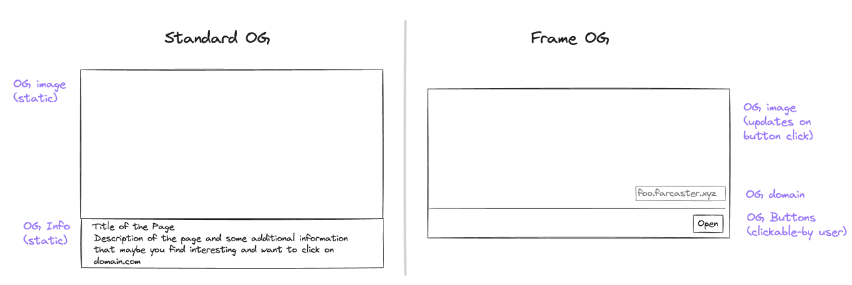
Source: Farcaster Docs
How To Get Started On Farcaster
To get started on Farcaster download their twitter-like social application ‘Warpcast’. Upon creating a new account you will be prompted to make a new wallet, this will act as your account for Farcaster, keep it in a safe place. The following account set-up mimics any web2 application you would be familiar with. If you wish you can link an existing wallet to your account so you can interact with frames to their full extent. Finally be sure to follow @apollocrypto for the latest updates.
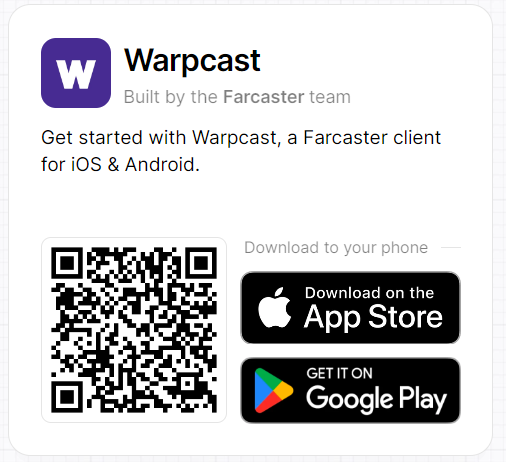
Conclusion
Farcaster embodies the principles of a Decentralised Society by providing a platform that prioritizes user control, data sovereignty, and open collaboration. Through its innovative use of Frames, Farcaster is not just a social network but a foundation for a wide range of decentralised applications. As the platform continues to gain traction, it represents a significant step forward in the journey towards a more decentralised, equitable, and user-centric digital world.